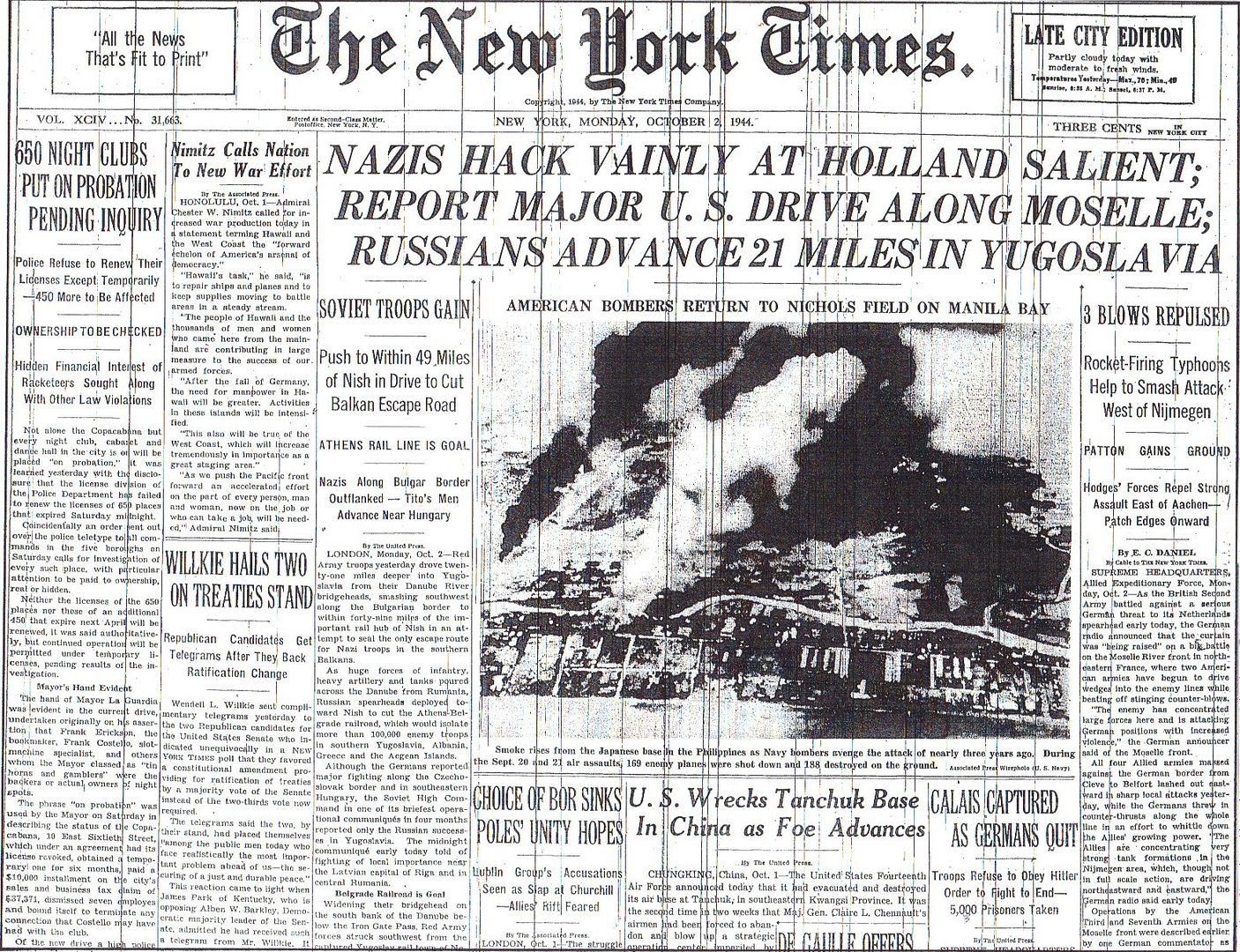
Posted on 10/02/2014 4:16:24 AM PDT by Homer_J_Simpson

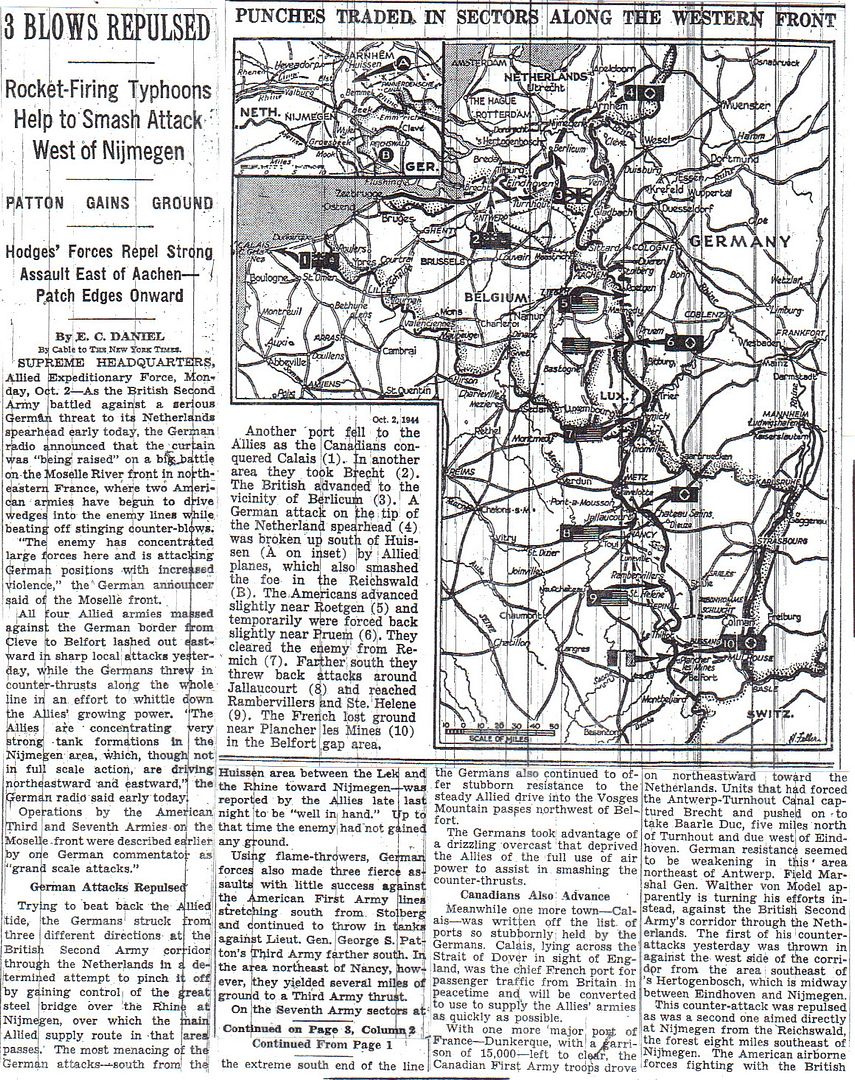
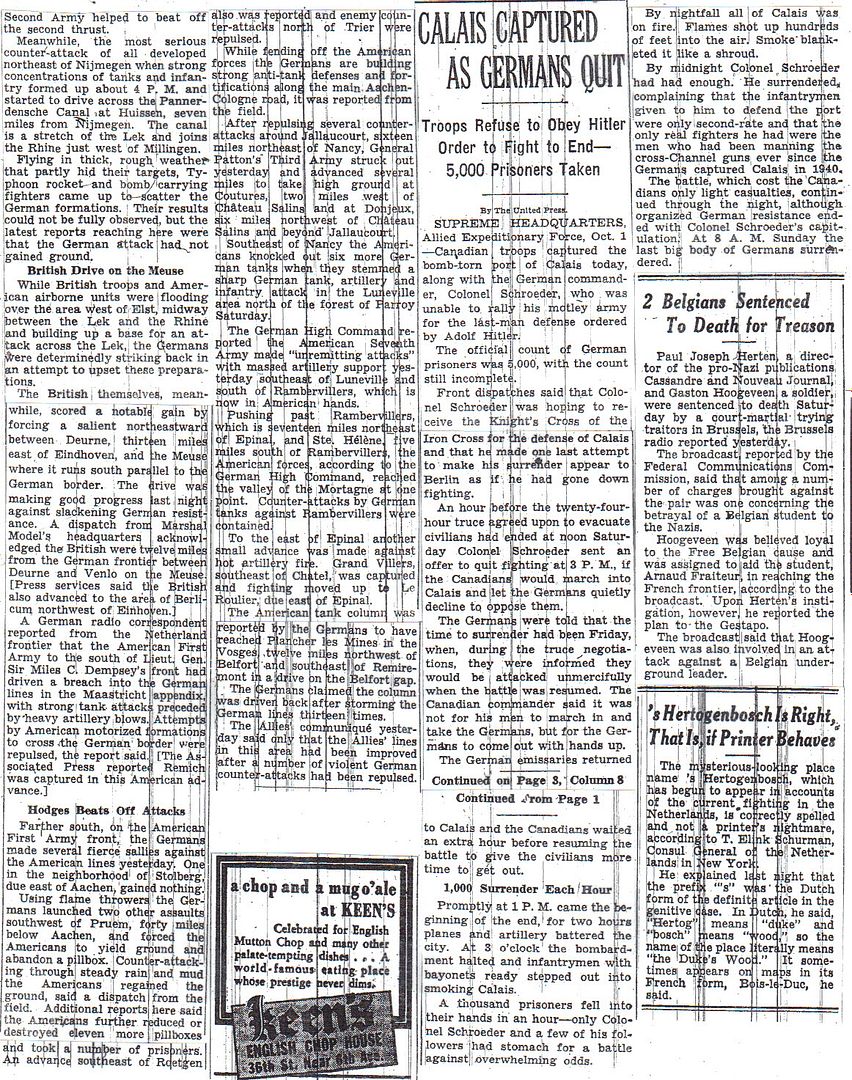
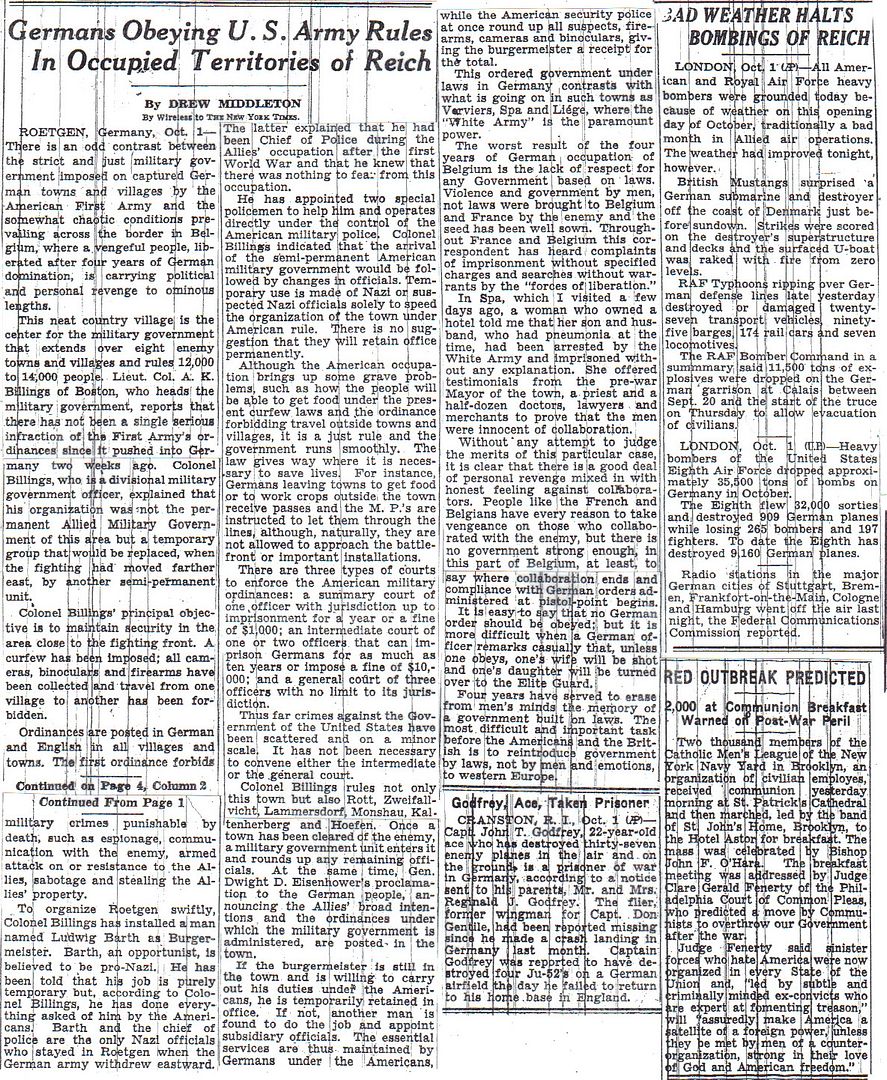
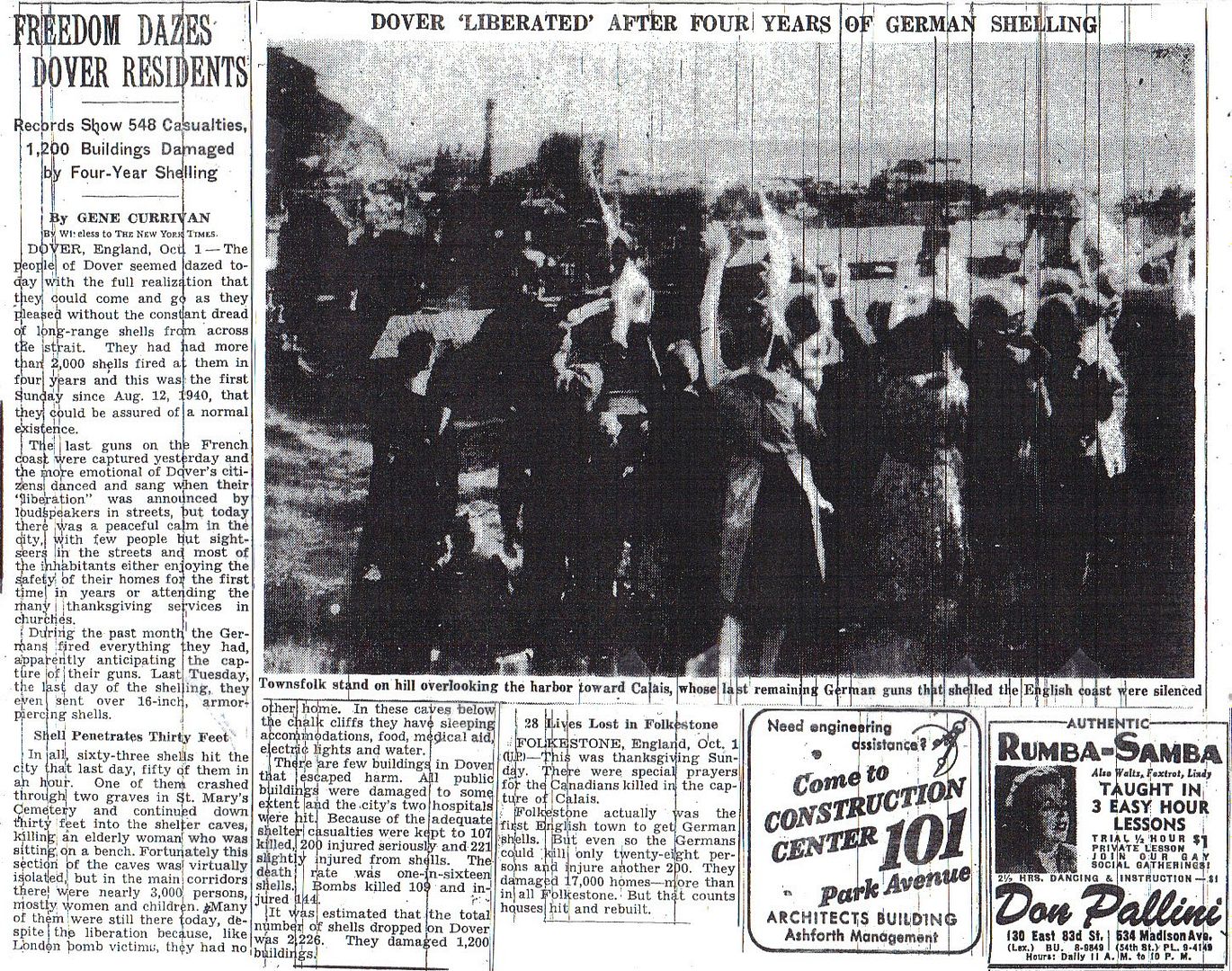
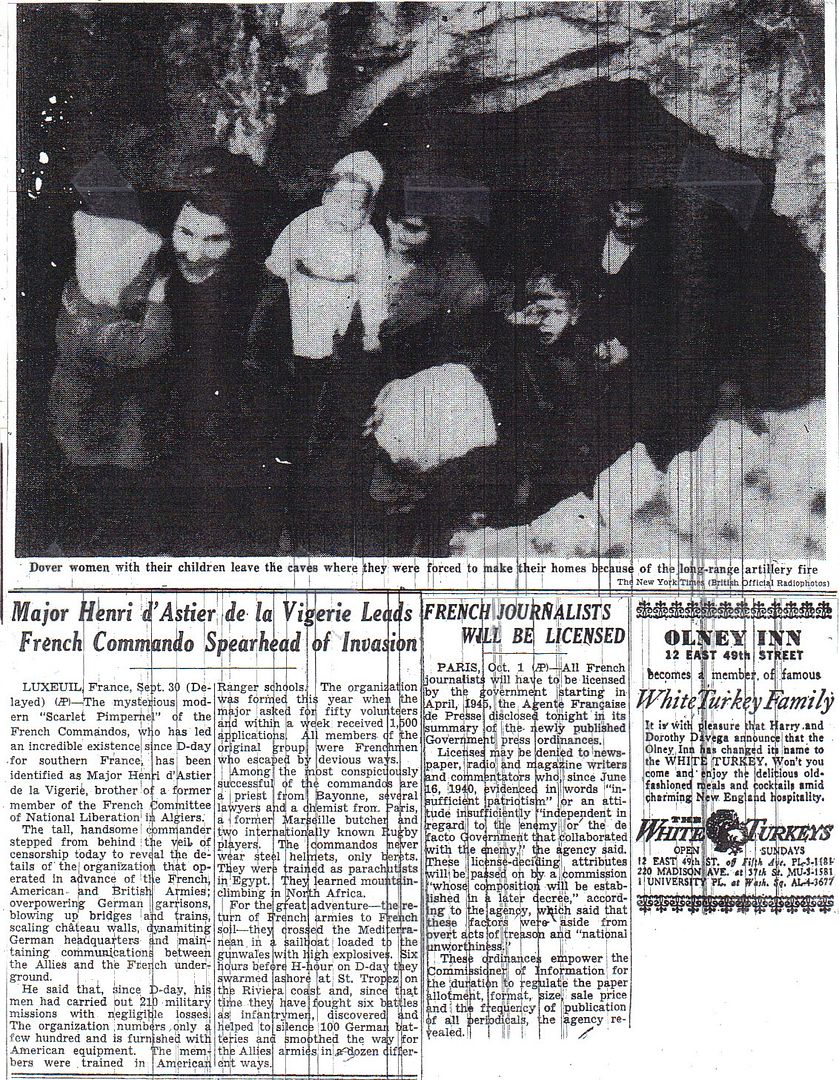
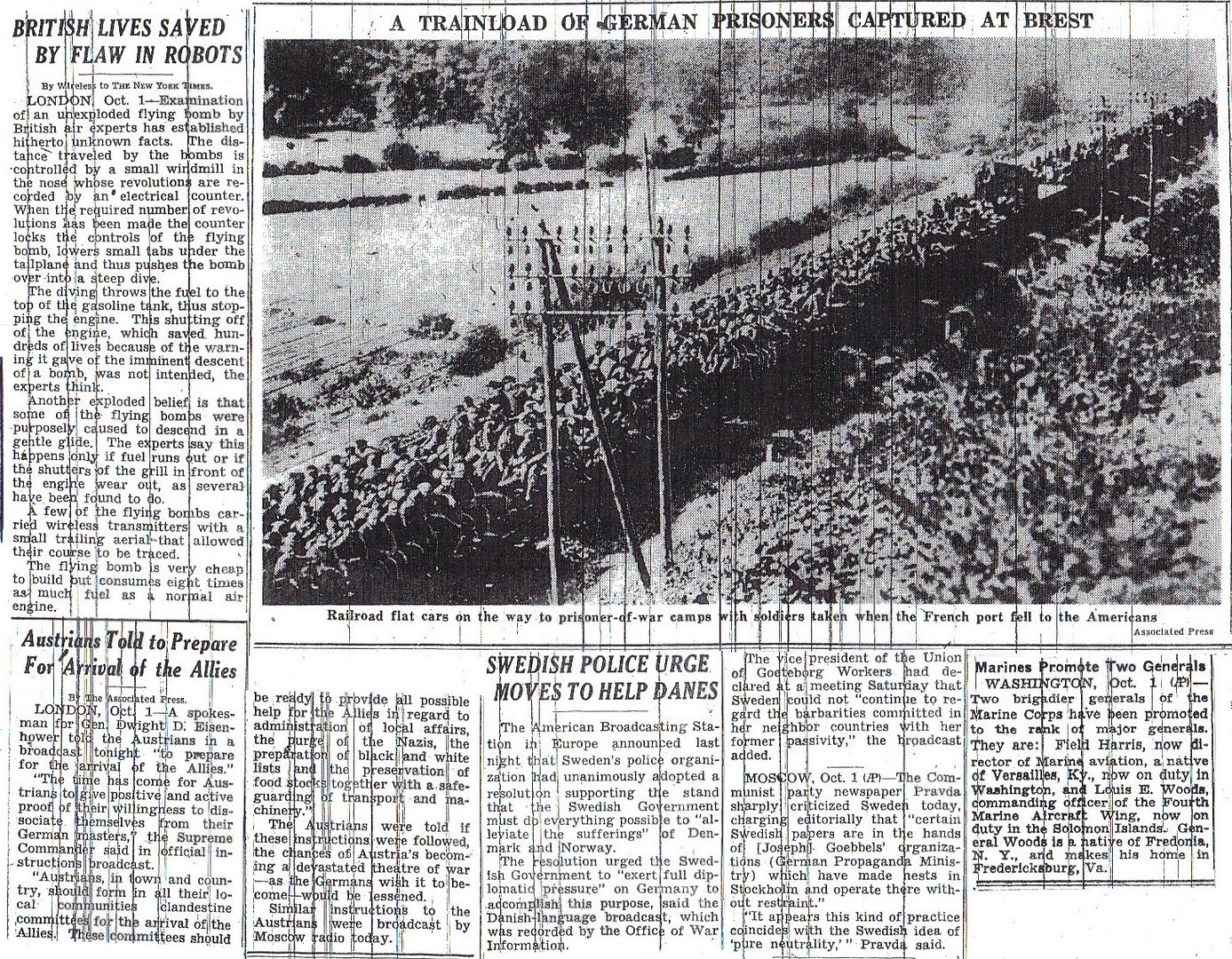
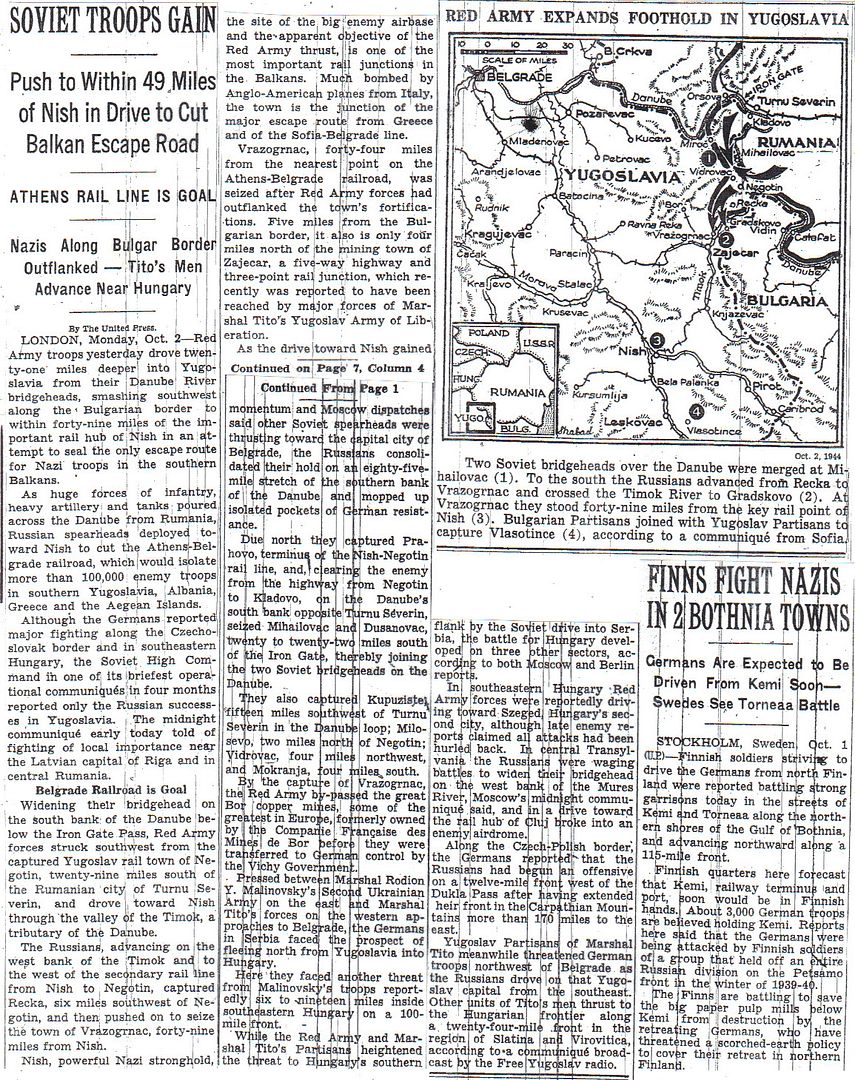
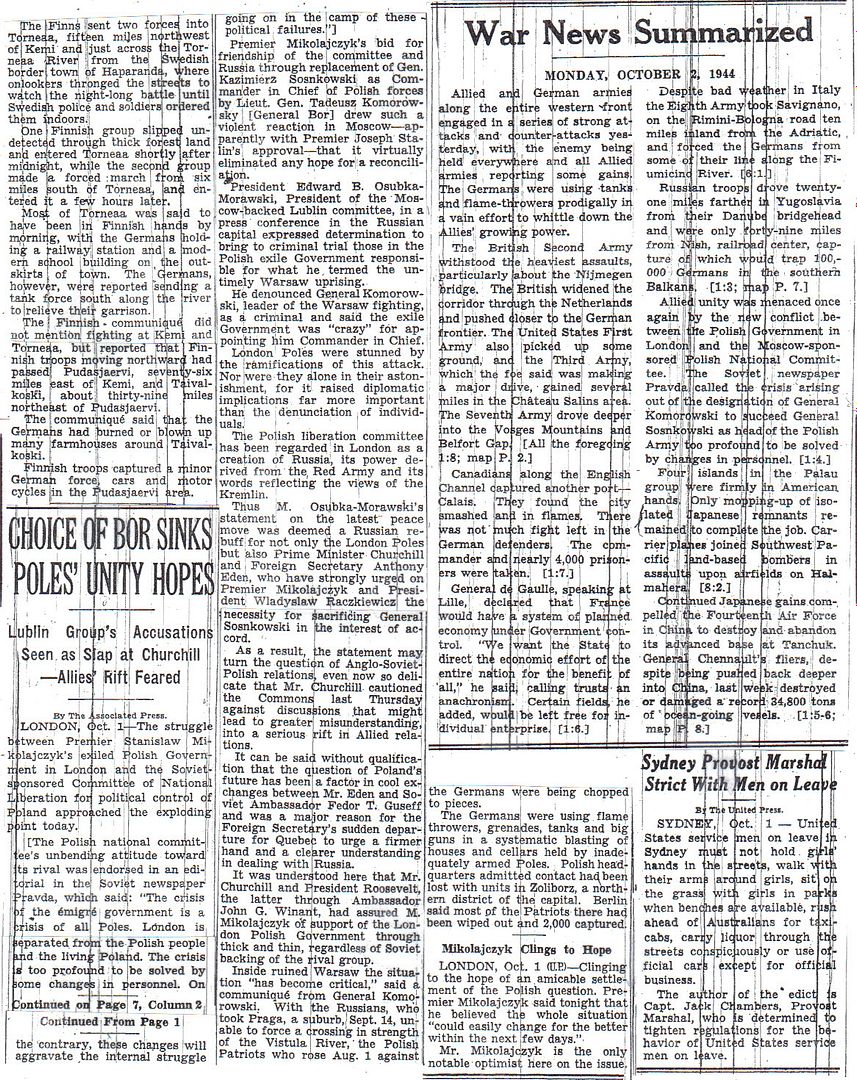
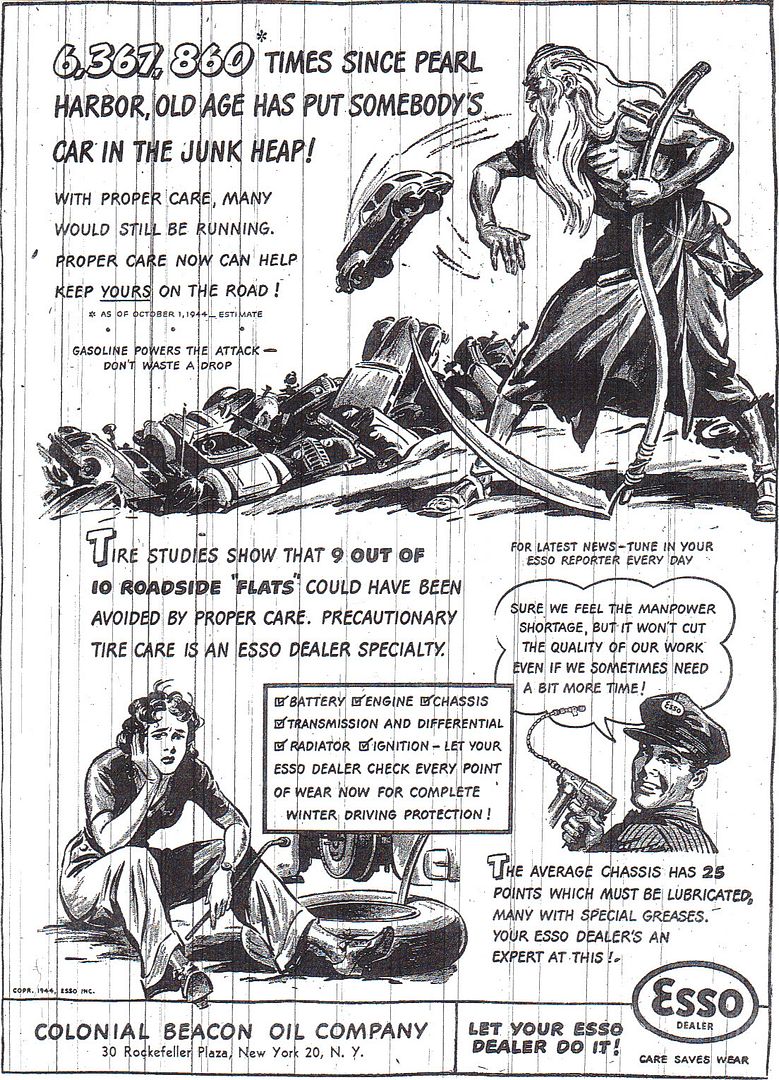

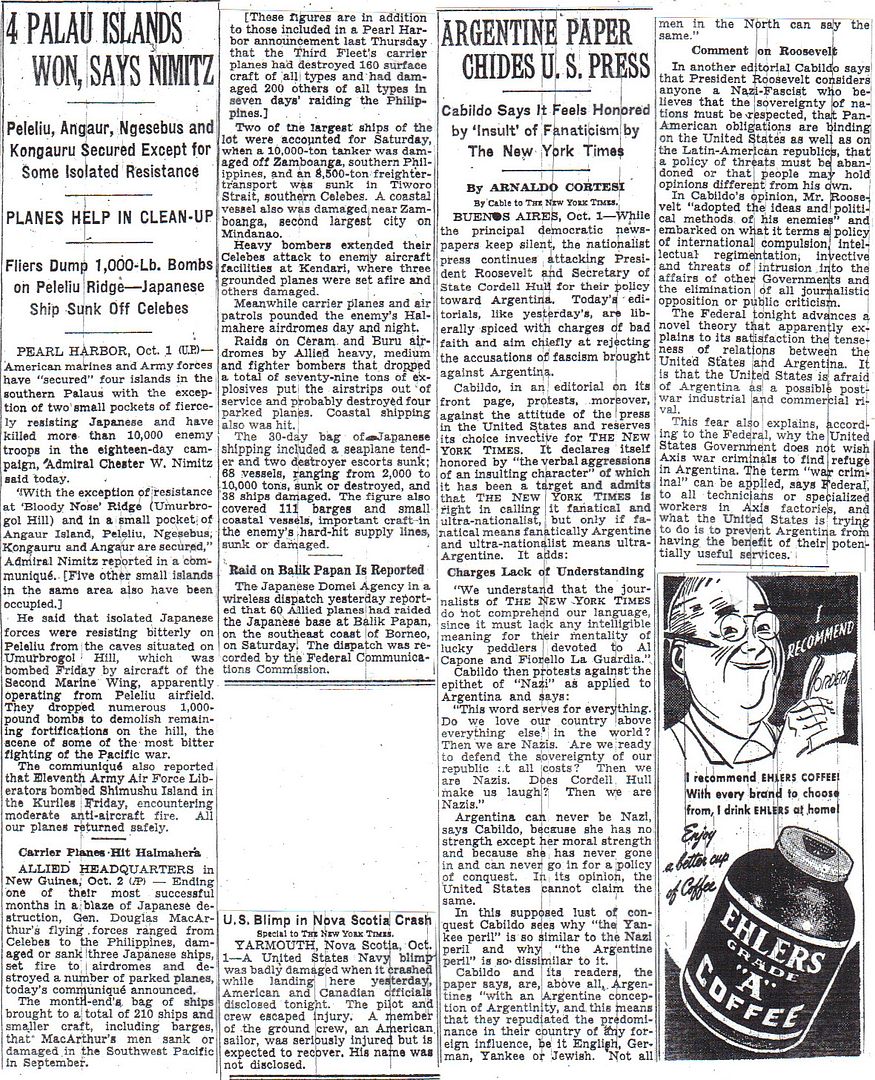

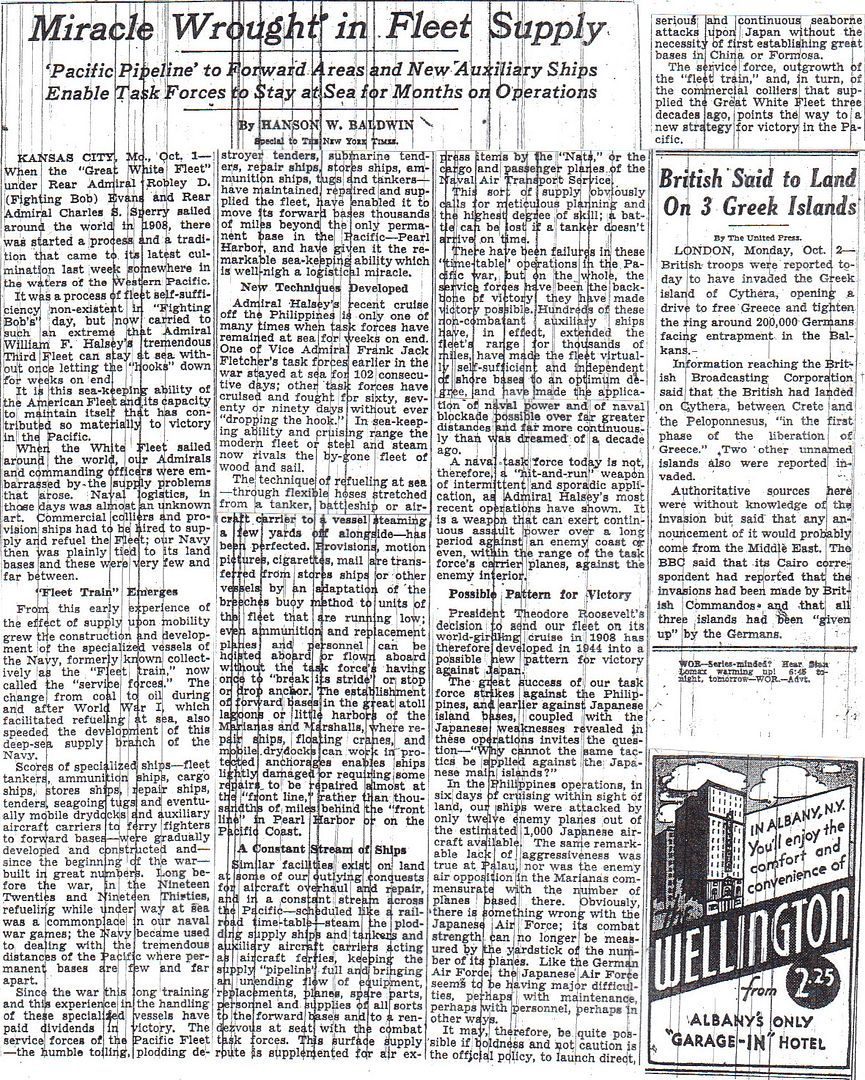
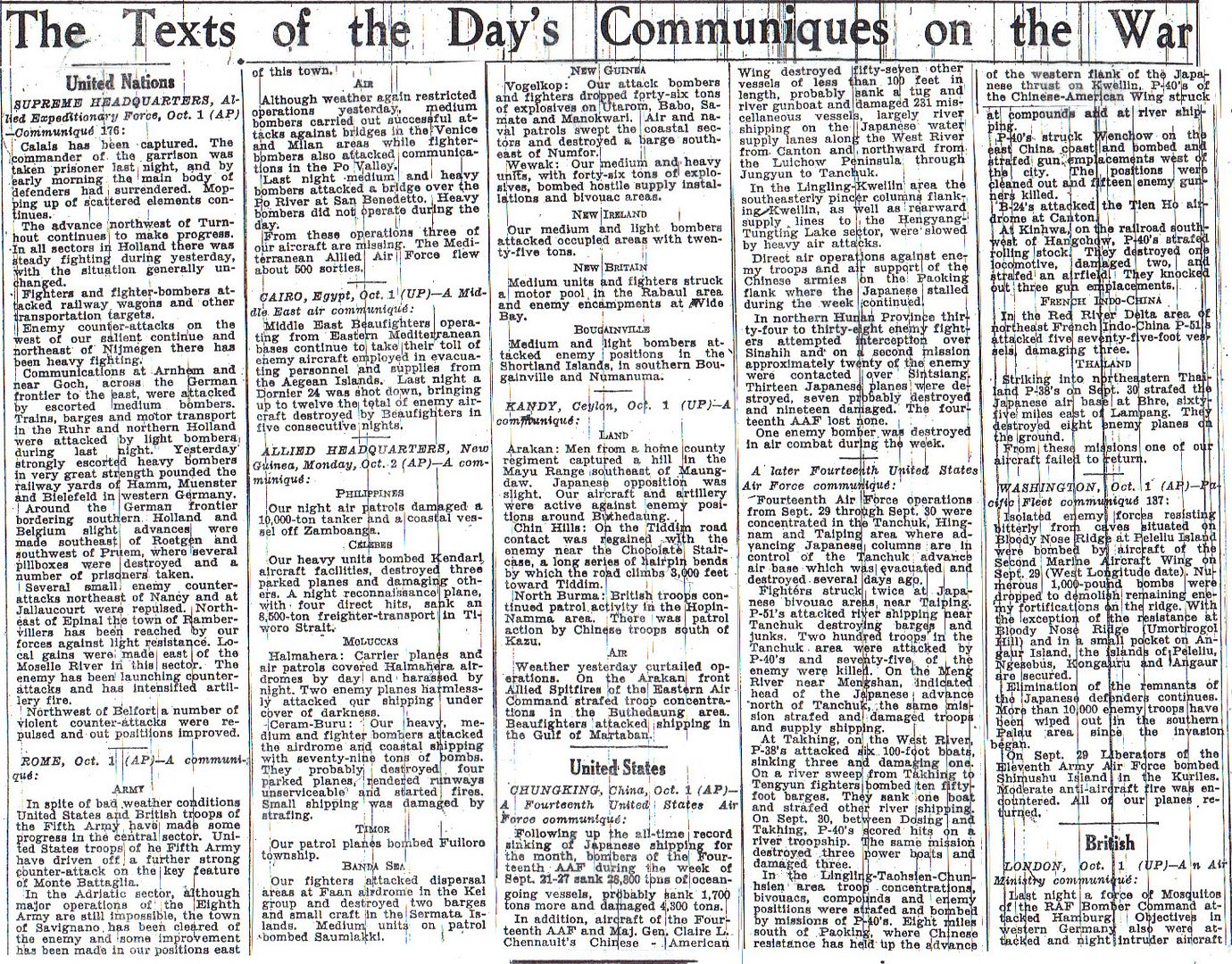

http://www.onwar.com/chrono/1944/oct44/02oct44.htm#
The AK surrenders to Germans
Monday, October 2, 1944 www.onwar.com
General Bors surrenders to the Germans [photo at link]
In Occupied Poland... The Warsaw uprising, led by the Polish Home Army (AK), comes to an end. An estimated 200,000 Poles have died in the fighting. Most of central Warsaw is in ruins.
On the Western Front... The US 1st Army (part of US 12th Army Group) launches an offensive against the German-held Siegfried Line between Aachen, to the south, and Geilenkirchen, to the north.
In the Palau Islands... On Peleliu, pockets of Japanese resistance on Mount Amiangal are cleared. Fighting around Mount Umurbrogol continues.
http://www.etherit.co.uk/month/9/02.htm
October 2nd, 1944 (MONDAY)
UNITED KINGDOM: Corvette HMCS Kincardine departed Londonderry as part of the escort for the 39-ship Liverpool to New York City convoy ON-257. The convoy arrived safely on 18 Oct 44.
Aircraft carrier HMS Triumph launched
Submarine HMS Spearhead launched.
England, the Eighth Air Force flies four strategic missions:
* Mission 658: 887 B-17s and 549 fighters, in 3 forces, are dispatched to make PFF attacks on industrial targets at Cologne and Kassel, Germany; 2 B-17s are lost:
- 305 B-17s are dispatched to hit the Bettenhausen ordnance depot at Kassel (129); targets of opportunity are Kassel (143), Fritzlar Airfield (12) and other (1). Escort is provided by 228 P-47s and P-51s without loss.
- 458 B-17s are dispatched to hit the Henschel motor vehicle plant at Kassel (384); targets of opportunity are Wiesbaden (31), Gesecke (9) and other (17); 2 B-17s are lost. Escort is provided by 219 P-47s and P-51s without loss.
- 110 B-17s hit the Ford motor vehicle plant at Cologne. Escort is provided by 53 P-47s and P-51s without loss.
* Mission 659: 308 B-24s are dispatched to make a PFF attack on the marshalling yard at Hamm (266); targets of opportunity are Handorf Airfield (29) and Munster (1); 2 B-24s are lost. Escort is provided by 212 P-38s, P-47s and P-51s; 1 P-51 is lost.
* Mission 660: 2 B-17s, escorted by 15 P-51s, drop leaflets on Dutch islands during the day.
* Mission 661: 5 B-24s and 3 B-17s drop leaflets in the Netherlands, France and Germany during the night.
On the European Continent, tactical operations by the Ninth Air Force include:
* HQ XXIX Tactical Air Command (Provisional) goes into operation along with the US Ninth Army (this new Tactical Air Command is formed from elements of the IX and XIX Tactical Air Commands).
* In Germany, the 9th Bombardment Division strikes the industrial area of Ubach and defended positions at Herbach.
* Fighters fly armed reconnaissance (and later night patrol) over Belgium, eastern France, and western Germany and support the US First, Third, and Seventh Armies in eastern France and western Germany.
BELGIUM: First Canadian Army drives to clear Scheldt estuary and open port of Antwerp to shipping.
British Field Marshal Montgomery, General Officer Commanding 21st Army Group, decides to drive southeast against the Ruhr from Nijmegen, The Netherlands, rather than continue northward. U.S. General Dwight D. Eisenhower, Supreme Commander, Allied Expeditionary Forces, asks that the two U.S. divisions with the British Second Army be returned as soon as possible.
During the day, 71 RAF Bomber Command Halifaxes deliver petrol (gasoline) from the U.K. to Melsbroek Airfield in Brussels.
NETHERLANDS: Ten USAAF Eighth Air Force bombers drop leaflets, two during the day and eight during the night of 2/3 October.
FRANCE: In the U.S. Seventh Army’s VI Corps area, Grandvillers falls to the 179th Infantry Regiment, 45th Infantry Division.
HQ XXIX Tactical Air Command (Provisional) goes into operation along with the U.S. Ninth Army. This new Tactical Air Command is formed from elements of the IX and XIX Tactical Air Commands.
GERMANY: The US 1st Army begins a new offensive against the Siegfried Line between Aachen and Geilenkirchen.
In U.S. First Army’s XIX Corps area, after aerial preparation that is none too successful and artillery bombardment that virtually eliminates German flak, the 30th Infantry Division begins the corps’ assault on the West Wall, attacking across the shallow Wurm River between Aachen and Geilenkirchen. The 117th Infantry Regiment of the 30th Infantry Division, crossing at Marienberg, reduces band of pillboxes within its sector and takes Palenberg; the 119th, crossing at Rimburg, is strongly opposed from Rimburg castle and Rimburg woods and cannot get beyond the railroad embankment. Armor attempts to assist the assault but is mired on the east bank of river. A German counterattack, delayed until about midnight by interdictory fire, is quickly repelled. Diversionary attack by 115th Infantry of the 29th Infantry Division, northwest of Geilenkirchen, overruns Hatterath, Birgden, and Kreuzrath and penetrates into Schierwaldenrath despite strong opposition. The U.S. 7th Armored Division is assisted by British and U.S. artillery as well as aircraft as it continues their effort to clear a corridor west of the Maas River. A task force of Combat Command B takes Vortum, but efforts to invest Overloon fail and the Germans begin a series of counterattacks. To the south, the Belgian 1st Brigade breaks off action in the Wessem area since it is greatly outnumbered by the Germans.
The USAAF Eighth Air Force bombs ten targets during the day: 551 attack the Henschel motor vehicle plant Kassel, 223 make a PFF on the marshalling yard at Hamm, 111 hit the Ford motor vehicle plant at Cologne, 106 bomb the Bettenhausen ordnance depot at Kassel, 31 hit an ordnance depot at Wiesbaden, 12 attack Fritzlar Airfield, 9 bomb the marshaling yard at Geiseke and 21 bomb targets of opportunity. Four aircraft are lost.
The USAAF Ninth Air Force strikes the industrial area of Ubach and defended positions at Herbach.
During the night of 2/3 October, 33 RAF Bomber Command Mosquitos bomb Brunswick, two each hit Pforzheim and Dortmund and three bomb the aircraft industry at Frankfurt-am-Main.
POLAND: The brave resistance in Warsaw surrenders to the Germans.
FINLAND: The Red Army pushes into Lapland, pursuing the retreating Nazis.
The fighting in Tornio went on, and by 20:00 hrs, the train station and the German supply depot were captured. The supply depot had large quantities of liquor in it, and before the officers could stop the men, heavy drinking took place. The whole 2nd Bn and parts of the 1st Bn became unfit for combat, but luckily the Germans waited for reinforcements and didn’t attack at a time when they would’ve surely swept the drunken Finns from Tornio.
Soon the Germans launched the first serious counter-operation (the previous ones had been too small as they underestimated Finnish strength), but failed to push the 11th Rifle Reg out of Tornio. (Sami Korhonen)
ITALY: Weather grounds Twelfth Air Force medium bombers and restricts fighters to reconnaissance and patrols; during the night of 1/2 Oct A-20s bomb targets of opportunity in the Po Valley.
In the U.S. Fifth Army’s IV Corps area, the 24th Guards Brigade of the South African 6th Armoured Division continues futile efforts to take Mount Catarelto. In the II Corps area, the U.S. 34th Infantry Division clears Cedrecchia but cannot take Mt. del Galletto or Hill 789 until after the Germans pull back, during the night of 2/3 October. The U.S. 91st Infantry Division seizes Monghidoro and reduces German defenses in this region. In the British Eighth Army’s V Corps area, elements of the Indian 4th Division continue their drive on San Martino.
GREECE: Allied troops land on Crete.
INDIA: The British Chiefs of Staff and War Cabinet have decided that Operation DRACULA (attack on Rangoon) cannot be undertaken in March 1945 as hoped without detracting from the main effort in Europe. Admiral Louis Mountbatten Supreme Commander, South East Asia Command, having concluded planning for Operation CAPTIAL (drive on Mandalay) and Operation DRACULA at reduced cost in response to request from British Prime Minister Winston Churchill, issues directives calling for Operation CAPITAL to be undertaken at once and Operation DRACULA about November 1945. The U.S. and Chinese Northern Combat Area Command (NCAC) part of Operation CAPITAL is to be conducted in two phases: clearing to line Indaw-Kunchaung-Sikaw-Namhkam by mid-December; and to a line Lashio-Mongmit—Thabeikkyin by mid-February 1945. General tasks of NCAC are to defend the air route to China and overland communications; secure that part of Assam and upper Burma within its zone.
BURMA: Mountbatten orders an immediate offensive against Mandalay.
On the Northern Combat Area Command (NCAC) front, gasoline (petrol) deliveries to Myitkyina by pipeline are begun.
49 Tenth Air Force P-47s pound several towns and bridges in the Bhamo area and destroy buildings in Shwekyina, Kaungsin, Maingka, Kyungyi, Singan, and Kabani; 20+ P-47s hit North Burma railroad targets and troops at Man He and Manla; 7 P-47s bomb Kutkai while 8 sweep the Lungling, China-Loiwing area, destroying a warehouse at Selan; 8 B-25s slightly damage road bridges north of Lashio; 4 others bomb and damage Nambkai road bridges and their vicinity; troop carrier aircraft fly 260+ sorties, delivering men and supplies to various points in the CBI.
CHINA: 11 Fourteenth Air Force B-25s attack the town of Pingnam while 16 bomb Tien Ho and White Cloud Airfields in Canton and the town of Samshui; 70+ P-40s and P-51 Mustangs on armed reconnaissance over southern China attack various targets of opportunity, chiefly river traffic and troop areas around Chuanhsien, Taochuan, Takbing, Wuchou, Dosing, and the Wenchow peninsula, and attack shipping in the Campba Port-Hongay area of French Indochina.
EAST INDIES: In the Netherlands East Indies, Far East Air Force B-25 Mitchells bomb Liang (Laha or Ambon East) Airfield on Ambon Island while B-24s hit Haroekoe Aerodrome on Ceram Island; P-38 Lightnings cover the Laha raid, attack shipping in Seri and Ambon Bays on Ambon Island and hit Amahai Airfield on Amahai Island and Kairatoe Airfield on Halmahara Island. Off Halmahera Island B-25 Mitchells fly a barge sweep, bomb Laboehan on Celebes Island and attack the coastal villages on Weda and Boeli Bays on Halmahara Island.
JAPAN: In the Kurile Islands, photo reconnaissance missions by four USAAF Eleventh Air Force B-25 Mitchells to Paramushiru Island and by two B-24 Liberators to Onnekotan Island, abort due to weather.
PELELIU: Fighting continues although the island was declared captured by Admiral Fort 3 days ago.
CENTRAL PACIFIC: Saipan Island-based Seventh Air Force B-24s hit Marcus Island in the North Pacific and shipping west of Chichi Jima Island, Bonin Islands.
SOUTHWEST PACIFIC: Far East Air Force B-25s bomb Laha Airfield on Ambon Island while B-24s hit Haroekoe Island; P-38s cover the Laha raid, attack shipping in Seri and Amboina Bays and hit Amahai on Ceram Island and Kairatoe Airfield on Celebes Island. Off Halmahera Island B-25s fly a barge sweep, bomb Laboehan, and attack the coastal villages on Weda and Boeli Bays.
NEW GUINEA: In Dutch New Guinea, USAAF Fifth Air Force P-40s attack vessels off Tamoelol village and Misool Island and bomb Otawiri and Ransiki Airfields.
CAROLINE ISLANDS: On Peleliu Island in the Palau Islands, the 321st Infantry Regiment finishes clearing and mopping up Mt. Amiangal on the northern part of the western arm, having killed at least 175 Japanese. The 7th Marine Regiment continues attacks on the Umurbrogol Pocket. On Angaur Island, the 322d Infantry Regiment suspends their costly assault against a Japanese pocket on the northwestern part of the island. The pocket, known to cover an area of less than 500 yards (457 meters) from east to west and 150 yards (137 meters) from north to south, is subjected to close-in fire.
JAPAN: Photo reconnaissance missions, by 4 Eleventh Air Force B-25s to Paramushiru Island and by 2 B-24s to Onnekotan Island, in the Kurile Islands, abort due to weather.
CANADA: Minesweeper HMCS Kalamalka commissioned.
U.S.A.:
Time Magazine, October 2, 1944:
MUTINY ON MARE ISLAND
A case without precedent in U.S. Navy history is drawing to a close this week on Yerba Buena Island, San Francisco Bay. Fifty U.S. sailors, all of them Negroes, are being tried for mutiny, for which the punishment may be death. The 50 are ammunition handlers who, a few weeks after the explosion of two ammunition-laden ships at Port Chicago (327 killed) refused to load a ship.
On an afternoon in August the ship had arrived at the Naval ammunition depot on Mare Island to take on a cargo of explosives. A division of loaders (105 men) - all of whom had been at Port Chicago - were mustered for the job. They fell in, shuffled a few steps, stopped. All but eleven of them refused to work.
The commandant tried persuasion. He sent the chaplain to talk to them. The chaplain pleaded” “Come on, boys, I’ll go with you.” The Negroes still balked. The commandant and his executive talked to them individually but could persuade only 21 of them to obey orders and go to work.
Another division was mustered. It lined up but broke ranks before marching a step. A third division arrived in busses. All but eight of them refused to work. In all, 277 men, all of them Negroes, refused duty. Finally Rear Admiral Carleton H. Wright, commandant of the 12th Naval District, hurried to the depot and made a stern but fatherly speech. Even then 50 held out - the 50 on trial this week.
Submarine USS Irex laid down.
Coast Guard-manned Army vessel FS-269 was commissioned at New York. LT Jacob Bursey, USCGR, was her commanding officer. She departed New York for the Southwest Pacific area on 22 October 1944. She operated during the war at Palawan, Philippines.
ARCTIC OCEAN: U-921 (Type VIIC) is listed as missing in the Arctic Ocean northwest of Narvik, Norway with all 51 crew. No explanation exists for its loss which probably occurred before Sept 29. (Alex Gordon)
http://en.wikipedia.org/wiki/Port_Chicago_disaster
has extensive info on Mare Island Mutiny and trial.
Here is more info on Triple Ace Captain John T Godfrey on page 4. His final tally was 16.33 enemy aircraft destroyed in aerial combat and 13.67 destroyed on the ground. He died in 1958 at the age of 36 from Lou Gehrig’s Disease (ALS). His book, The Look of Eagles, was published posthumously.
http://www.4thfightergroupassociation.org/uploads/8/2/0/3/8203817/biography_godfrey_jt_336.pdf
"The concentration camp at Klooga, Estonia, located in the northern part of the country, was established in 1943.
On September 19, 1944, as Soviet forces approached the camp, the Nazis fell back on what was becoming a standard response to imminent liberation: hurried, calculated murder.
Inmates were taken in groups into nearby woods and executed.
About 2,400 of the camp's Jewish inmates and approximately 100 Soviet prisoners of war were killed this way.
Among the victims were this pregnant woman and her unborn child."
"When the Red Army liberated the camp on September 28, only 85 inmates were found alive, including the four Russians pictured here."
"An energetic Nazi organizer in the Saar-Palatinate since 1925, Josef Bürckel rose through the ranks to become Gauleiter (Nazi Party leader) for the region.
Following the Anschluss (Annexation) of Austria in 1938, Bürckel became Gauleiter of Vienna and Reichstatthalter (governor) of Austria.
He worked diligently to further unification with Germany, including promoting anti-Jewish decrees and seizing Jewish property.
He died, probably by his own hand, on September 28, 1944."
German map for Aachen and the Ardennes. Nope, nothing to be worried about in the Ardennes. It's a quiet sector.
Patton's Third Army and German 1st Army continue the slugfest at Metz.
7th Army fights German 19th Army in the Vosges.

Canada Ping!
I looked for info but couldn’t find any. Why did Burckel commit suicide? The Allies were still a long way from Austria.
“Sydney Provost Marshal Strict With Men on Leave” (Page 9)
United States service men on leave in Sydney must not hold girls’ hands in the streets, walk with their arms around girls, sit on the grass with girls in parks when benches are available, rush ahead of Australians for taxicabs, carry liquor through the streets conspicuously, or use official cars except for official business.”
***
So, what are they supposed to do for fun in Sydney, then?

One of my uncles spent time in Australia during WWII and my aunt is Australian.
Look at them sitting on the grass in the park! No wonder they had babies!
You crack me up.
Thank you!
Yeah! Just think what might have happened if they had carried liquor through the streets conspicuously!
Disclaimer: Opinions posted on Free Republic are those of the individual posters and do not necessarily represent the opinion of Free Republic or its management. All materials posted herein are protected by copyright law and the exemption for fair use of copyrighted works.